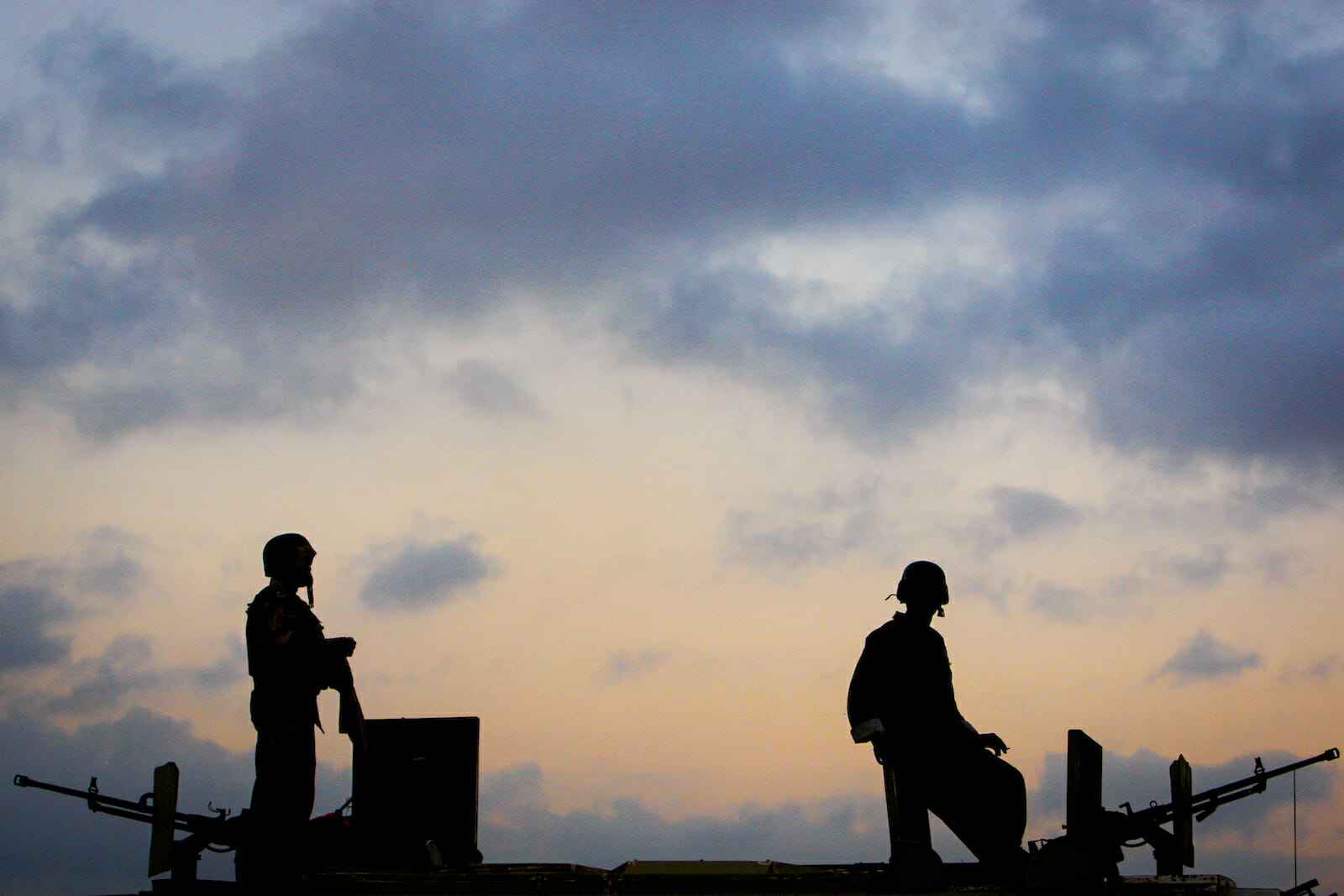
Foreign Policy for Somalia Needs a Boost
“Under Secretary Sherman urged the Somali leadership to continue to consolidate gains by helping local governance structures emerge through community dialogue and reconciliation.” – U.S. State Department
On November 4, 2012, Under Secretary of State for Political Affairs Wendy Sherman visited Somalia and met with President Hassan Sheikh Mahamud, government leaders, military leaders, UN representatives, community and business leaders. A State Department release noted, “Under Secretary Sherman is the highest-ranking U.S. official to visit Somalia in more than twenty years, and her visit underscored the U.S. Government’s commitment to Somalia’s stabilization efforts.”
In 1991 the U.S. Embassy in Mogadishu was closed, leaving a diplomatic void. In the chaos that followed secular and Islamic warlords fought for control of the country. Had we stayed, we could have helped guide them through the democratic governing and election process. Instead, we returned two years later on a humanitarian aid mission and became embroiled in trying to capture a local Islamist warlord. In the process, our military killed a number of innocent clan leaders. In a subsequent battle, we lost eighteen of our soldiers. Ever since we have tried to undermine the Islamists, and establish a democratic style of government.
To put Under Secretary Sherman’s trip into perspective, we need to revisit the time in 1991 when the U.S. Embassy in Mogadishu was closed, after the downfall of Mohamed Siad Barre. From 1969 to 1991 Barre had been the country’s military dictator and president. The U.S. had developed a relationship with the Siad Barre in 1979. The following year, we signed agreements for the use of ports and airfields in Somalia, in exchange for defensive military equipment. Over the next number of years we increased military assistance by more than $100 million a year.
In 1989 we supplied arms, reportedly used for attacks against the autonomous northern state of Somaliland. Shortly thereafter the U.S. withdrew most of its financial and military support and maintained only a security assistance program in order to keep access to the airbases and port facilities. As the civil war raged on, several rival tribal clan factions made substantial regional gains. Some formed an alliance with the common goal of ousting the Barre government. By 1991, Mogadishu was under pressure from these well-armed factions. The powerful clan led by the warlord Mohamed Farrah Aidid, together with a coalition of clans, fought against government forces and overthrew Siad Barre on January 26, 1991. Ali Madhi Muhammad, a rival warlord from one of the coalition clans, was chosen to take over as the president, but managed to stay in office only until November 1991. He was never able to unite the country, which fell into chaos. The Ali Madhi and Aidid clan militias started fighting each other for control.
After we closed our embassy, we had no further in-country diplomatic representation and had to clandestinely deal with the different warlords and their clans. While these warlords fought for power, a radical Islamic faction known as al-Ittihad al-Islamiya became associated with the newly formed Islamic Courts Union (ICU) also fighting for control, gained parts of the capital and nearby villages; more than twenty thousand people died. The conflict brought about the destruction of agricultural production throughout Somalia, which led to mass starvation.
In December 1992, UN and U.S. peacekeepers went to Somalia on a humanitarian food distribution mission; to see if peace could be established. The corrupt warlords interfered with the food supply distribution. They hijacked the supplies headed for the people in the outlying villages and distributed them instead among their own clans and friends. They even sold them in neighboring countries for weapons. With less than 20 percent of the supplies reaching the people, an estimated 300,000 died of starvation. Clashes between warlord clans and Islamist militias added to the instability. By the summer of 1993, there were at least twenty competing warlord clans and just as many Islamist factions—including al-Qaeda— with the numbers growing.
At the March 15, 1993, “Conference on Reconciliation in Somalia” held in Addis Ababa, represented by fifteen clan factions, an agreement was reached in principle on terms to restore peace and democracy. By May, however, Aidid, the dominant warlord, would not cooperate on the implementation of the agreement. In June, Aidid and key leaders of his Habar Gedir clan were involved in an attack on UN peacekeepers, killing 24 Pakistani soldiers. In July, the U.S. military, looking for Aidid, went to what was thought to be his safe house in Mogadishu. In the short attack that followed U.S. Cobra helicopters fired missiles into the building, killing more than seventy clan elders, who had been meeting to discuss possible peace solutions. This mistake was to be the turning point, unifying the Somalis and turning them against the U.S. and UN humanitarian aid efforts.
In October 1993, there was another military operation to apprehend Aidid and his lieutenants in their Mogadishu stronghold. The U.S. and UN forces consisted of 19 aircraft, 12 vehicles, and 160 soldiers. Forewarned of the impending attack Aidid’s clan, combined with the Somali National Alliance (SNA) and al-Qaeda militias totaling 2,000 to 4,000 fighters, well-armed with grenade launchers and automatic weapons, were ready and waiting. In the battle that ensued, rocket-propelled grenades shot down two Black Hawk helicopters and damaged three others. Some of the wounded troops were evacuated, some were trapped and cut off, and the battle continued throughout the night. Because of confusion, aid did not arrive immediately.
The next morning, a task force was sent to rescue the trapped soldiers. However, one of the crash sites had been overrun by the militias. When the battle was over, 18 U.S. soldiers had died and another 73 were wounded. Among the UN forces, one Malaysian and two Pakistani soldiers died. Angry Somalis dragged several of the dead U.S. soldiers through the streets of Mogadishu. This failed operation, known as the “Battle of Mogadishu” shook up President Clinton who ordered the withdrawal of all U.S. troops.
Warlords and Islamic extremists continued to create instability with inter-clan fighting for control. Attempts for reconciliation between all the parties had failed. A Transitional National Government (TNG) formed in April 2000, did not bring stability to the country. The TNG faced internal problems, changing prime ministers four times in less than three years. In November 2004, a Transitional Federal Government (TFG) was established in Nairobi, Kenya, because it was too unstable to function in Mogadishu. In 2006, the TFG set up an interim office 150 miles from Mogadishu in the town of Baidoa, The TFG has gone through several presidents since 2004, including Abdullahi Yusuf Ahmed and Sheik Sharif Sheik Ahmed. Neither was able to get their arms around the economy, poverty conditions, or the al-Shabaab terrorists that raised havoc and control areas in southern Somalia.
A former Foreign Service officer, who was the Somalia country-watcher, told me that information gathering was difficult under the best of circumstances but would have been more accurate had the U.S. kept a presence in the country. I believe the U.S. erred in not having a diplomatic presence in Somalia, with nine million Muslims living at the poverty level. We need to remember it only takes one indoctrinated Islamist to inflict enormous damage on the United States. To understand al-Qaeda’s far-reaching fervor to destroy us as a country, it was imperative to have an actual presence in Somalia, to acquire valid intelligence information. We need to keep the vital links of information open in al-Qaeda’s backyard—so they do not reach our backyard. Lacking reliable information has made it more difficult to root out the radical Islamists, whose tentacles now reach across the Horn of Africa and Sahel region.
With the influence of insurgents growing, a school teacher in southern Somalia stated that the students in his class showed too little interest in education, and were more interested in playing war. UNICEF reports have indicated, “An entire generation of children has grown up knowing only conflict and fighting…and possibly thousands of children have been trained in combat.”
A top Somalia official has said, “There is an increased need to invest more in Somalia’s youth, in order to give long-term peace a chance to prevail,” further noting, “We need to make sure that this generation receives quality basic education, access to social services and protection from violence and abuse. This will stop them being sucked into the continuing violence, and they will then be able to make a positive and lasting contribution to the future of Somalia.”
Under Secretary Sherman stressed to senior Somali officials, “her conviction that Somalia is now a place of hope, and not of despair.” I wish she had taken the time to visit the autonomous state of Somaliland, which has been peaceful, except for periods when attacked by Siad Barre’s military regime. Somaliland has focused on its citizens. Democratically elected officials have for years focused on poverty issues, jobs, healthcare, and education. More recently organizations like “Somali and American Fund for Education” (SAFE) have added to the building of classroom facilities in the region. Our Price Family Foundation has funded four classrooms, at two schools located near Hargeisa, the capital. It is important to help Somali children find a way forward through secular education. These young students will become the future leaders of Somalia. If this generation of Somali children is to find hope for the future, there will need to be an emphasis placed on basic education.
Sustainable economic development, agriculture production, job creation, and infrastructure improvements are paramount if Somalia is to share in the global economy. Without education, however, most of the achievements for Somalia’s success will not happen. The State Department would be well served, on their next visit to Somalia, to bring decision makers from the U.S. Agency for International Development (USAID), the Peace Corps, and UNICEF, which would be a good start in rebuilding Somalia.

